Higher classification: Family Rosaceae, subfamily Spiraeoideae, genus Spiraea, section Chamaedryon (traditional but not monophyletic group), Spiraea arcuata aggregate
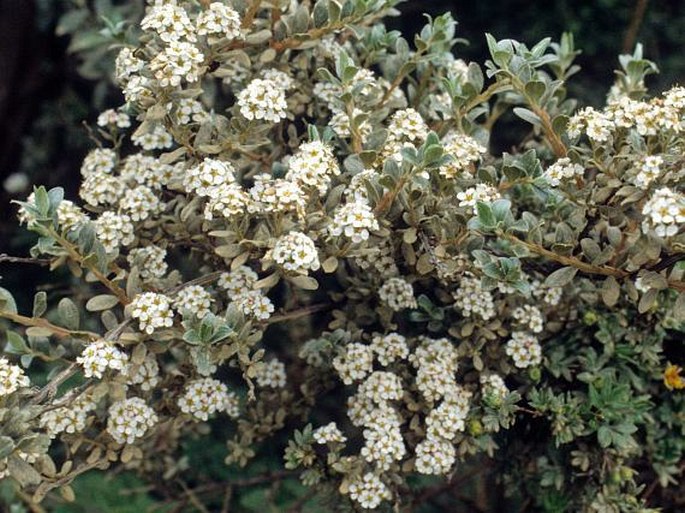
Distribution: Spiraea lanatissima is a narrowly endemic species known only from a limited high mountain area of ca. 100 km across at the eastern margin of the Qinghai-Tibetan Plateau near the towns of Litang and Daocheng in western Sichuan, China.
Ecology: Shrubby margins of high mountain stony pastures and open shrubby slopes, preferably on the limestone ground, between altitudes of at least 3800 and 4200 m.
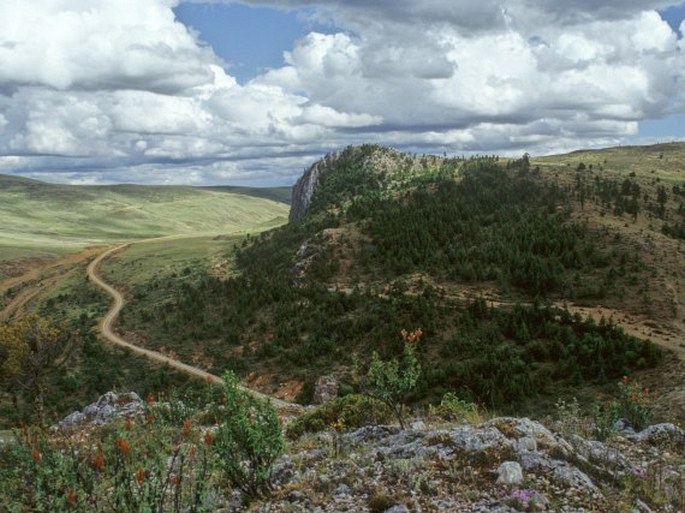
Description: Shrubs usually to 0.5 m high, broadly divaricate, branches relatively thick, arcuate, conspicuously angled; sterile shoots, fertile branchlets and pedicels densely whitish tomentose, sterile shoots angled; buds conspicuous, longer than petiole, flat, lanceolate, with two exterior valvate, densely tomentose scales, persistent after sprouting in the next year, (3–)4–6 mm (on sterile shoots). Leaves almost homomorphic, of the ± same shape on sterile or fertile shoots. Leaf blades conspicuously whitish woolly on both sides, more densely beneath, with deep green upper surface only slightly visible through hairs, with three principal veins prominent beneath, branching at almost one point above the blade base and dividing the blade into four equal portions (secondary veins not distinct under indumentum), elliptic to obovate, entire or with 1–2 coarse teeth or lobes on each side near the apex on sterile shoots, with cuneate base and rounded to obtuse apex, (8–)11–16 × 5–9 mm on sterile shoots and somewhat smaller on fertile branchlets. Petioles (1–)2–5 mm, groove-like and falcate, articulated into two parts, densely whitish tomentose abaxially, in the upper part also adaxially, glabrescent adaxially in the basal part, which persists on branches after leaf shedding during subsequent years; the persistent basal part conspicuously decurrent along the shoot, bent knuckle-like under the bud insertion, representing c. 1/2–2/3 of the petiole length. Inflorescences usually 6 to 14, set laterally on arcuate branches (transformed from the previous year’s sterile shoots); simple few-flowered corymbs on leafy, 0.5–3 cm branchlets, with usually 5 to 15 flowers c. 8 mm in diameter, on pedicels up to 8 mm; the lower pedicels with single leaf-like, elliptic to minute, linear bract; flowers in June and July. Hypanthium and sepals externally whitish woolly; sepals triangular, acute, c. 0.9–1.5 mm, inside whitish villous only around the apex; staminal disk distinct; petals almost orbicular with rounded, shallowly lobed or emarginate apex, 3–3.5 mm, white; mature stamens with filaments approximately equal to the petal length; carpels whitish villous (with the exception of the apical part in some cases), style c. 1 mm.
Taxonomic notes: This plant was discovered by Ludmila and Roman Businský south of Litang in western Sichuan during their expedition to Tibet in 1992 and already then supposed to be a new species. However, as such it was described only recently by the latter discoverer (in Phyton, Annales Rei Botanicae, 55, 1, 2015, p. 88, fig. 1) after his detailed examination of all similar taxa in nature and in Chinese herbaria. Several older herbarium samples was found from the vicinity of Litang and not far Daocheng, collected by Chinese botanists in 1960s and 1970s, but undetermined correctly. Spiraea lanatissima is morphologically very similar to other two species of the Spiraea arcuata aggregate, S. arcuata and S. mollifolia, but it is conspicuously different in its extremely dense whitish indumentum and its trichotomous leaf venation. No transition was found between the most villous morphotype of the latter species and S. lanatissima, either in herbaria or in nature.
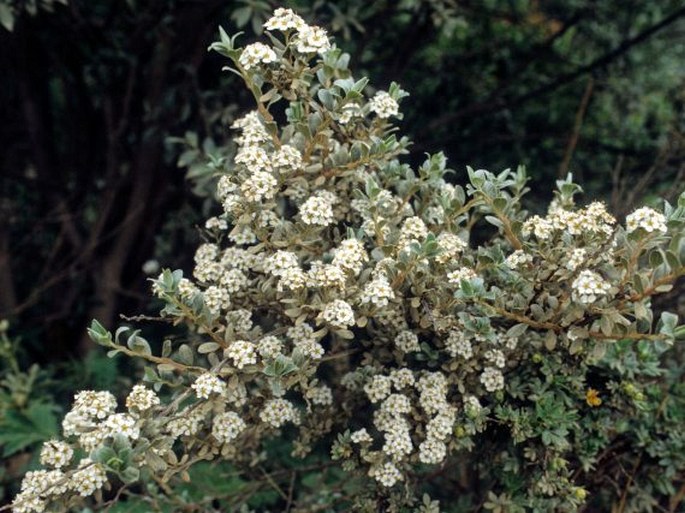
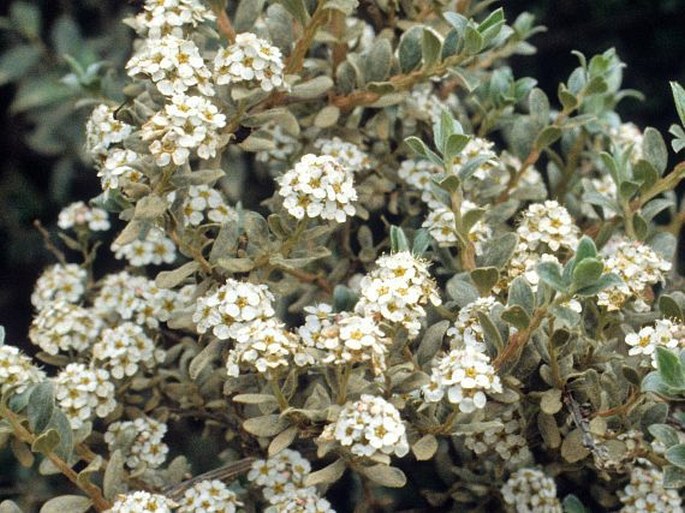
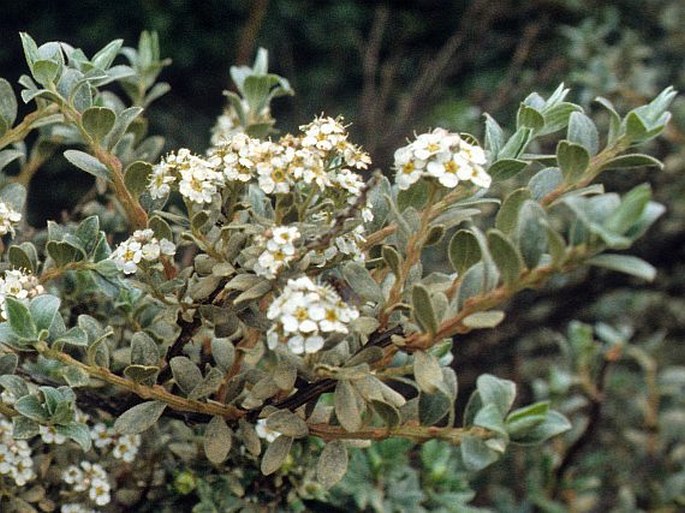
These images were taken in China, Sichuan, at the type locality south of Litang (1992).


